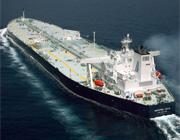
Tanker owners are still in the loop following OPEC’s inability to provide the oil markets with some positive news on increased production figures, while demand is ever so growing. This week, IEA raised the issue once again, trying to exert pressure on OPEC
to revise its views and solve its internal division, with Iran claiming that it was the one negating the Saudis’ push for increased production. IEA said that oil demand is expected to grow steadily until 2016. The agency raised its forecast for global oil demand growth to 1.3 percent annually over the next five years on economic expansion in China, cautioning that gains in prices threaten the recovery.
Consumption will increase to 95.3 million barrels a day in 2016 from 88 million barrels a day in 2010, with China accounting for about 41 percent of the gain it said in its Medium-Term Oil Market Report.
Oil prices may increase if OPEC fails to bolster production and inventories decline, the head of the International Energy Agency said. Supplies may become “very tight” if the Organization of Petroleum Exporting Countries doesn’t increase production to meet higher demand in July, Executive Director Nobuo Tanaka said this week in an interview with Bloomberg Television in St. Petersburg, Russia. Saudi Arabia is likely to deliver on its pledge to keep markets adequately supplied, he said. If prices remain at $110 to $120 for the rest of the year, the “burden on the global economy would be as bad as 2008, when the economy made a hard landing,” Tanaka said. The agency is prepared to coordinate a release of emergency stockpiles if the gap between supply and demand remains, he said.
In a separate report, shipbroker CR Weber mentioned that during the day when it became clear that OPEC wouldn’t be able to reach a consensus on oil production increase, tanker equities were falling. The Weber Tanker Index of tanker stocks lost 3.1% that day, illustrating the news’ reception by traders who had expected a quota hike to aid tanker demand and ease oil prices. CR Weber’s report said that “yet given the lack of consequentiality of OPEC’s quotas on its member’s production levels (indeed compliance has declined dramatically from the current quota set early in 2009) OPEC’s decision should have no negative implications on the physical tanker market going forward. Saudi Arabia is already likely to have increased June oil production by at least 500,000 b/d to 9.5 mb/d. So, assuming this adds at least 7 VLCC cargoes to the monthly Middle East fixture count much of the excess tonnage is easily absorbed. During July, Saudi Arabia is expected to ramp up production further, to 10.0 Mb/d, implying 10‐12 additional VLCC fixtures per month” it mentioned.
It went on to say that “oil demand in the oil intensive developing Asian economies – particularly China – continues to post strong rates of demand growth as reported by the IEA this week, likely rising by nearly 1.0 mb/d this year from 2010 levels. Accordingly, Saudi Arabia is keen to prevent supply shortages and to not precipitate demand destruction in the Western economies which are apparently more reactive to price swings. Given that much of the fresh demand is on the MEG‐East route, should the production boost be a one‐off event, then the short‐haul nature of the route would not imply a very significant hike in VLCC rates. However, projections for Asian oil demand to pick up further during this fall imply that the production and accompanying VLCC demand boost should be sufficient to provide an impetus for an improved VLCC earnings environment. Moreover, not all added Saudi barrels will be bound for Asia; this week the markets saw a surge on the long‐haul, ton‐mile driving West Africa‐East route which has already experienced activity growth of 6.6% YTD, y/y.
It is noteworthy that, presently, the projected Middle East VLCC surplus is just 5 units through to the end of June, versus 22 units one month ago, implying a much better balanced supply/demand
ratio.
Thus, we note (albeit guardedly) that the VLCC market may well be on the cusp not just of a near‐term mini‐rally, but perhaps a return to more sustainable earnings. A revision to our high‐case VLCC earnings projections shows a 2H11 average of $29,500/day – not a level at which owners should return to the newbuilding market, but an improvement nevertheless from 1H11” concluded the analysis.
Source: Nikos Roussanoglou, Hellenic Shipping News Worldwide
We use cookies to improve your experience. By continuing to use our site, you accept our Cookies, Privacy Policy,Terms and Conditions. Close X